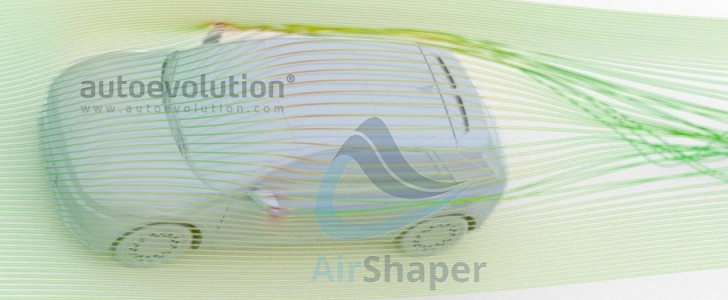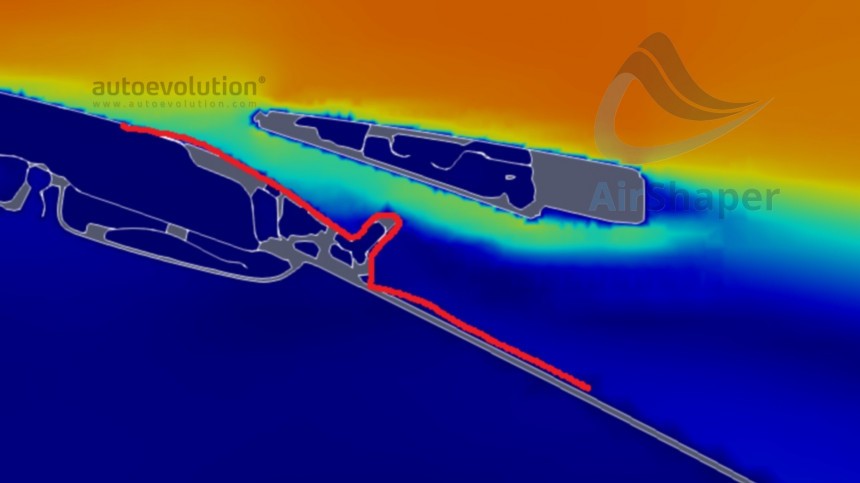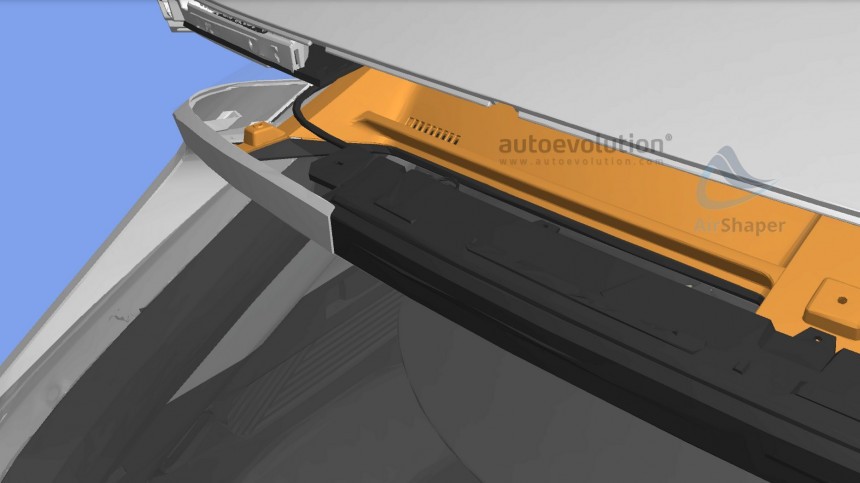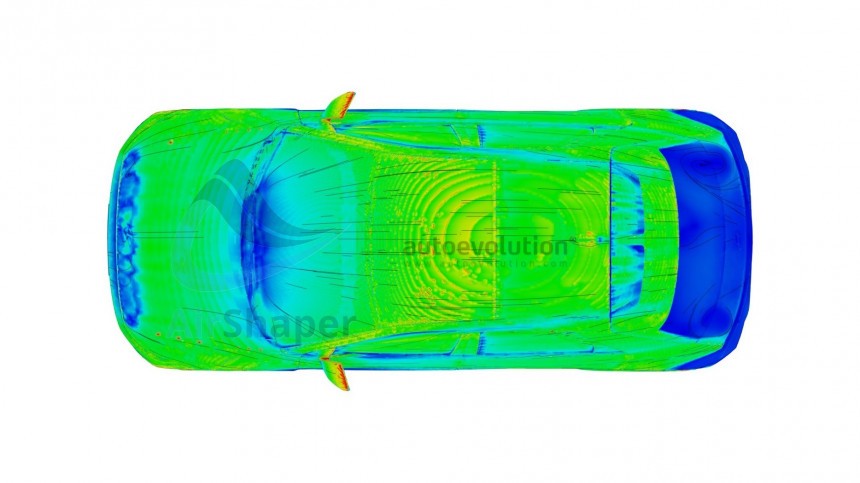On July 13, 2021, we published an investigation about why Hyundai decided to eliminate the rear wiper on the Ioniq 5. The company told us that it was “to ensure the best aerodynamic performance” but did not tell us how much more mileage the EV got from that move. On the other hand, the company has since taken down the video explaining the vehicle’s aerodynamics. It was the only thing Wouter Remmerie had to analyze the airflow in the car. True to his promise, the AirShaper CEO obtained a 3D model of the Ioniq 5 and made a complete assessment of the vehicle’s aerodynamics for autoevolution. The conclusion is that it needs a rear wiper.
“The airflow is not nicely following the surface of the rear window (in technical terms: the flow is detached or separated). That means that on the surface, the air indeed does not have the right direction and momentum to push air and dirt away.”
When the airflow detaches from any surface, it creates a turbulence area. Practically all hatchbacks, station wagons, and SUVs have a rear wiper because this turbulence helps dust, dirt, and water to accumulate in that area. That’s what made Christian Stadler complain about the rear visibility in the Ioniq 5 when he tested it in an autobahn on a rainy day. With sales picking up, it is not unlikely that new owners of the electric crossover will share that impression with the Youtuber. They may even start to complain about that as well.
Remmerie made this analysis with the help of Vincent Keromnès, from A2MAC1, an automotive benchmarking company. The A2MAC1 Dynamic Benchmarking Domain Leader also suggested a slice-through that presents how the airflow behaves after passing the rear spoiler. The objective for this component seemed to be helping direct the air to the back window – and keeping it clear of water and dust. The image below shows that is not the case.
The AirShaper CEO started the explanation:
“Here, you can see that there actually is flow underneath the wing, but it doesn’t follow the curvature of the window below. As you can see, there is a step downward that prevents this.”
Keromnès gave us his opinion about that as well.
“Maybe the goal of the step is to ‘collect’ the water coming from the roof. My concern is about the potential wind noise that this is going to generate.”
After having a more detailed check at the Hyundai Ioniq 5's 3D model, the A2MAC1 Dynamic Benchmarking Domain Leader shared more news about that with autoevolution:
"I can confirm from the exploration of the 3D model that this is to collect water. As you can see, there’s a small grille on the side (orange part). Very interesting design. First time I see that."
Unfortunately, the solution is not effective in all situations, as Stadler shared in his video. The AirShaper CEO then presented the study’s perspective of the airflow seen from above.
“When you look at the top view of the car, you can see that flow is still being channeled towards the spoiler, but on the rear windscreen, the flow is completely detached (blue area behind the rear wing). As indicated in the first article, this is mainly because of the step between the roof and the rear window, which causes the flow to detach.”
The conclusion presented by Remmerie and Keromnès reveals that Hyundai did not manage to deliver any aerodynamic solution to avoid the rear wiper. The Kia EV6 – which also uses the E-GMP architecture – is another vehicle that abolished the equipment. The difference is that the Kia's design gives us the impression that airflow can still follow the rear glass. If that is really the case, it can keep it as clean as that of a sedan or a fastback, for example.
In Hyundai’s case, the 45 Concept and the commitment to preserve its striking design into a production vehicle put the automaker between a rock and a hard place. The company could get rid of the rear wiper, improving range God knows by how much. However, that would make it look like those affordable hatchbacks back in the day that did not have one to cost even less.
The other option was to preserve rear visibility and give the car the equipment its design clearly required, as Remmerie and Keromnès demonstrated. You already know what Hyundai decided to do. Thanks to these guys, you just don’t need to believe that the Ioniq 5 is ok without a rear wiper.
When the airflow detaches from any surface, it creates a turbulence area. Practically all hatchbacks, station wagons, and SUVs have a rear wiper because this turbulence helps dust, dirt, and water to accumulate in that area. That’s what made Christian Stadler complain about the rear visibility in the Ioniq 5 when he tested it in an autobahn on a rainy day. With sales picking up, it is not unlikely that new owners of the electric crossover will share that impression with the Youtuber. They may even start to complain about that as well.
Remmerie made this analysis with the help of Vincent Keromnès, from A2MAC1, an automotive benchmarking company. The A2MAC1 Dynamic Benchmarking Domain Leader also suggested a slice-through that presents how the airflow behaves after passing the rear spoiler. The objective for this component seemed to be helping direct the air to the back window – and keeping it clear of water and dust. The image below shows that is not the case.
“Here, you can see that there actually is flow underneath the wing, but it doesn’t follow the curvature of the window below. As you can see, there is a step downward that prevents this.”
Keromnès gave us his opinion about that as well.
“Maybe the goal of the step is to ‘collect’ the water coming from the roof. My concern is about the potential wind noise that this is going to generate.”
"I can confirm from the exploration of the 3D model that this is to collect water. As you can see, there’s a small grille on the side (orange part). Very interesting design. First time I see that."
Unfortunately, the solution is not effective in all situations, as Stadler shared in his video. The AirShaper CEO then presented the study’s perspective of the airflow seen from above.
The conclusion presented by Remmerie and Keromnès reveals that Hyundai did not manage to deliver any aerodynamic solution to avoid the rear wiper. The Kia EV6 – which also uses the E-GMP architecture – is another vehicle that abolished the equipment. The difference is that the Kia's design gives us the impression that airflow can still follow the rear glass. If that is really the case, it can keep it as clean as that of a sedan or a fastback, for example.
In Hyundai’s case, the 45 Concept and the commitment to preserve its striking design into a production vehicle put the automaker between a rock and a hard place. The company could get rid of the rear wiper, improving range God knows by how much. However, that would make it look like those affordable hatchbacks back in the day that did not have one to cost even less.
The other option was to preserve rear visibility and give the car the equipment its design clearly required, as Remmerie and Keromnès demonstrated. You already know what Hyundai decided to do. Thanks to these guys, you just don’t need to believe that the Ioniq 5 is ok without a rear wiper.












